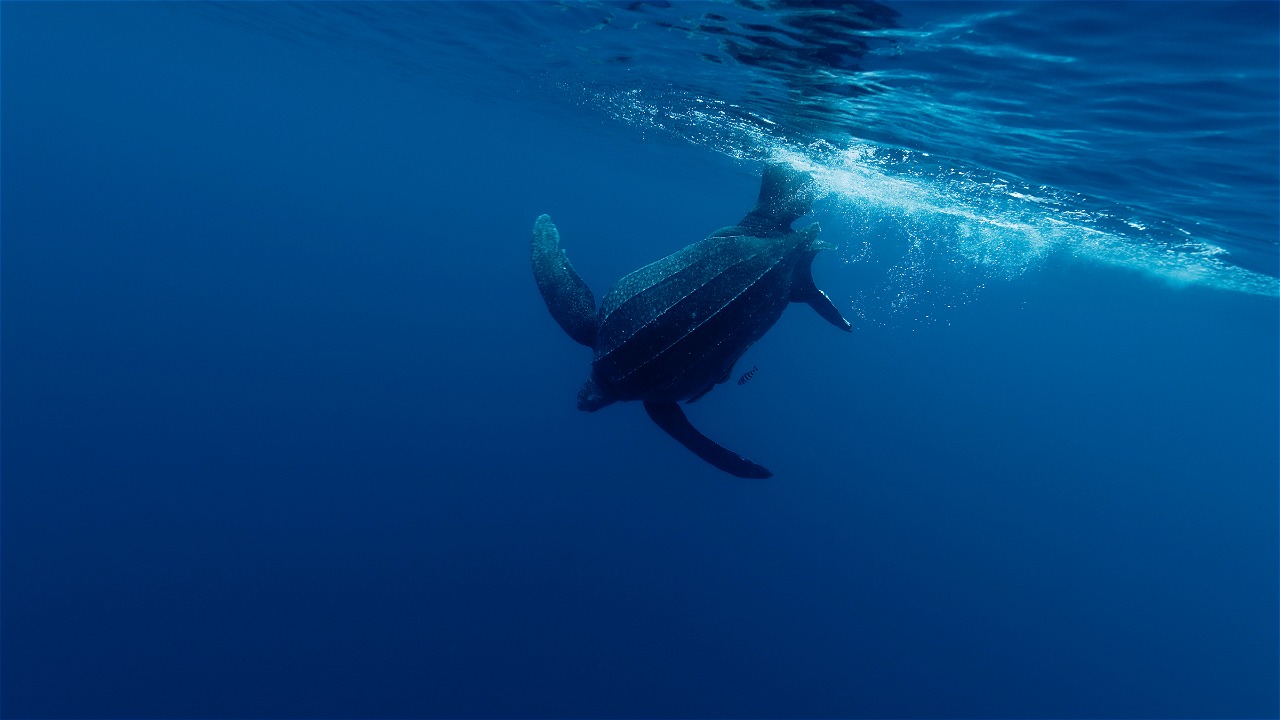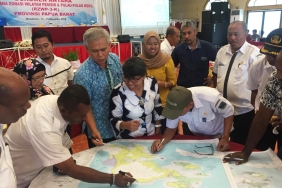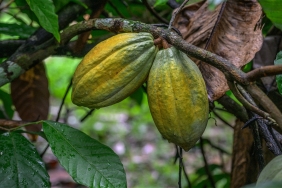FIGHTING TO ENSURE THE FUTURE OF LEATHERBACK TURTLES
By: Hadi Ferdinandus and Efraim Kambu
Although laying eggs is a natural process for animals, there are times when they also need help when laying eggs. That's what the WWF-Indonesia Papua Program's Turtle Monitoring Team did. At night when the turtles lay their eggs, the Turtle Monitoring Team is ready to provide help.
When a mother turtle goes to the beach to lay her eggs, there are several stages before she lays her eggs. One of these stages is digging into the sand using her hind flipper (turtle foot). Unfortunately, not all turtle hind flippers are intact or normal. In fact, they are often found in a deformed condition. When the deformed turtle's flipper is used to dig a nest, the shape and depth of the excavated nest will be abnormal. As a result, the eggs can easily be dug up and eaten by predators.
In this situation, the monitoring team on duty will immediately assist the mother turtle in digging sand. Using their hands, carefully and slowly, team members dig from the back so that it looks as if the turtle is digging the nest. Often, even though the back flip is normal, the sand can easily collapse and cover the hole that has been dug. WWF-Indonesia's monitoring team will help dig out the sand in the nesting hole until the turtles lay their eggs. If the mother turtle lays eggs below the high tide mark, the eggs will be immediately relocated to a safe place or to a prepared nest until the eggs hatch.
Leatherback turtles that fail to lay a nest will return to lay eggs elsewhere. It is likely that the turtle will return and lay eggs under high tide or that the nest is too shallow to be eaten by predators. For this reason, the monitoring team tasked with safeguarding and protecting turtle eggs struggles to ensure the safety of turtle eggs until they hatch.
The struggle of the Turtle Monitoring Team has yielded positive results. From mid-December 2015 to April 2016, WWF-Indonesia conducted monitoring activities at Jeen Syuab Beach (Warmon Beach). In coordination with the Jeen Womom Coastal Park Conservation Unit, Tambrauw Marine and Fisheries Service and the people of Kampung Wau, turtle monitoring activities were carried out by involving six local people as turtle monitors.
This monitoring activity has succeeded in reducing the habit of taking turtle eggs by local people. From the results of turtle nest relocation activities by WWF-Indonesia staff assisted by local communities, 610 leatherback turtle hatchlings have been successfully rescued to the sea from 17 nests. This number will continue to grow along with the relocation activities that continue to be carried out in the Jeen Syuab Beach nesting habitat. Entering the turtle nesting season in June - July, with the strengthening of the Jeen Womom TP UPTD and the presence of WWF-Indonesia, it is expected that the number of hatchlings rescued will increase.





